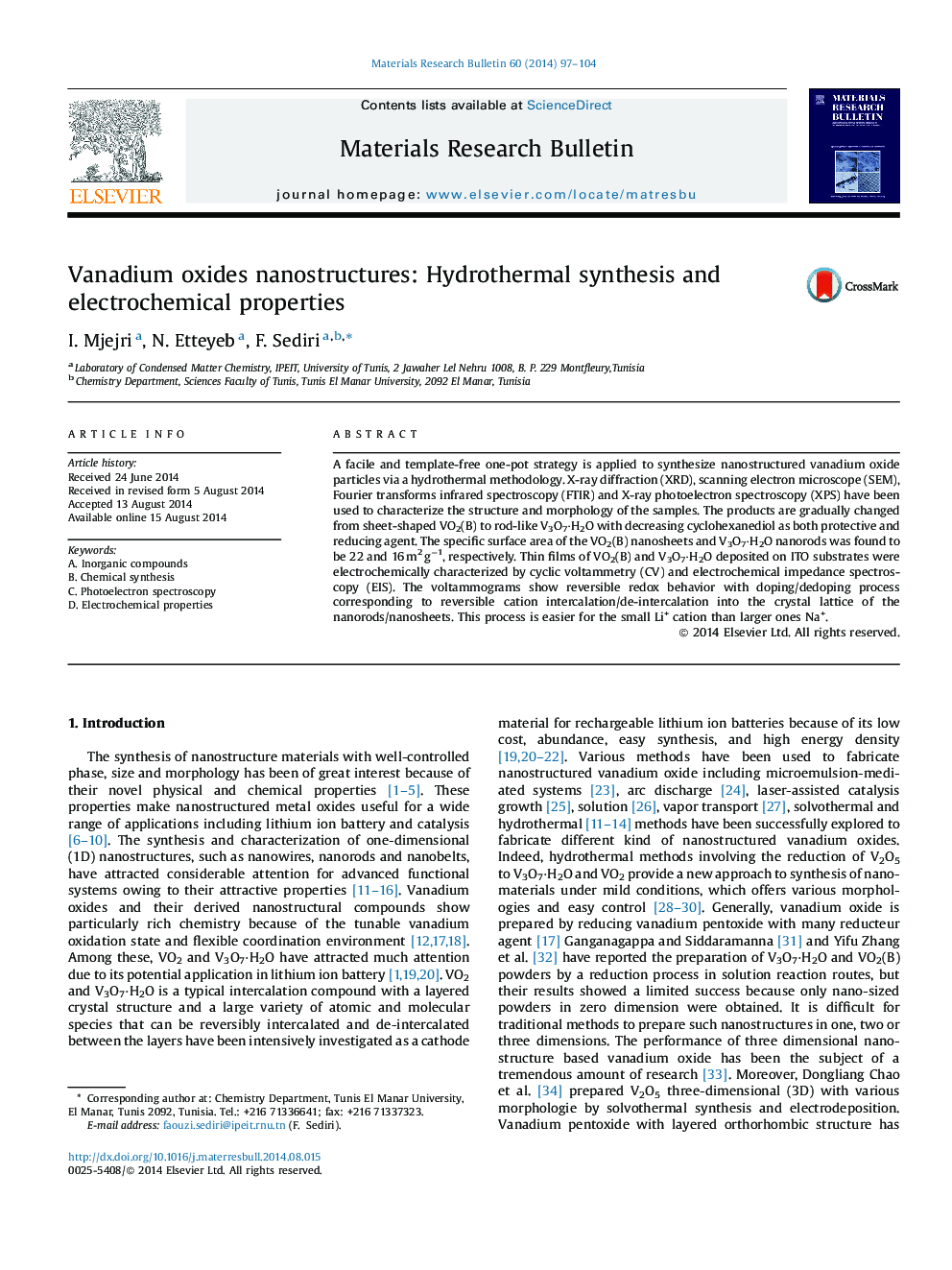| Article ID | Journal | Published Year | Pages | File Type |
|---|---|---|---|---|
| 1487817 | Materials Research Bulletin | 2014 | 8 Pages |
•Vanadium oxides nanostructures were synthesized hydrothermally.•Reversible redox behavior with doping/dedoping process.•Doping/dedoping is easier for Li+ to Na+.•Energy-related applications such as cathodes in lithium batteries.
A facile and template-free one-pot strategy is applied to synthesize nanostructured vanadium oxide particles via a hydrothermal methodology. X-ray diffraction (XRD), scanning electron microscope (SEM), Fourier transforms infrared spectroscopy (FTIR) and X-ray photoelectron spectroscopy (XPS) have been used to characterize the structure and morphology of the samples. The products are gradually changed from sheet-shaped VO2(B) to rod-like V3O7·H2O with decreasing cyclohexanediol as both protective and reducing agent. The specific surface area of the VO2(B) nanosheets and V3O7·H2O nanorods was found to be 22 and 16 m2 g−1, respectively. Thin films of VO2(B) and V3O7·H2O deposited on ITO substrates were electrochemically characterized by cyclic voltammetry (CV) and electrochemical impedance spectroscopy (EIS). The voltammograms show reversible redox behavior with doping/dedoping process corresponding to reversible cation intercalation/de-intercalation into the crystal lattice of the nanorods/nanosheets. This process is easier for the small Li+ cation than larger ones Na+.
Graphical abstractFigure optionsDownload full-size imageDownload as PowerPoint slide
